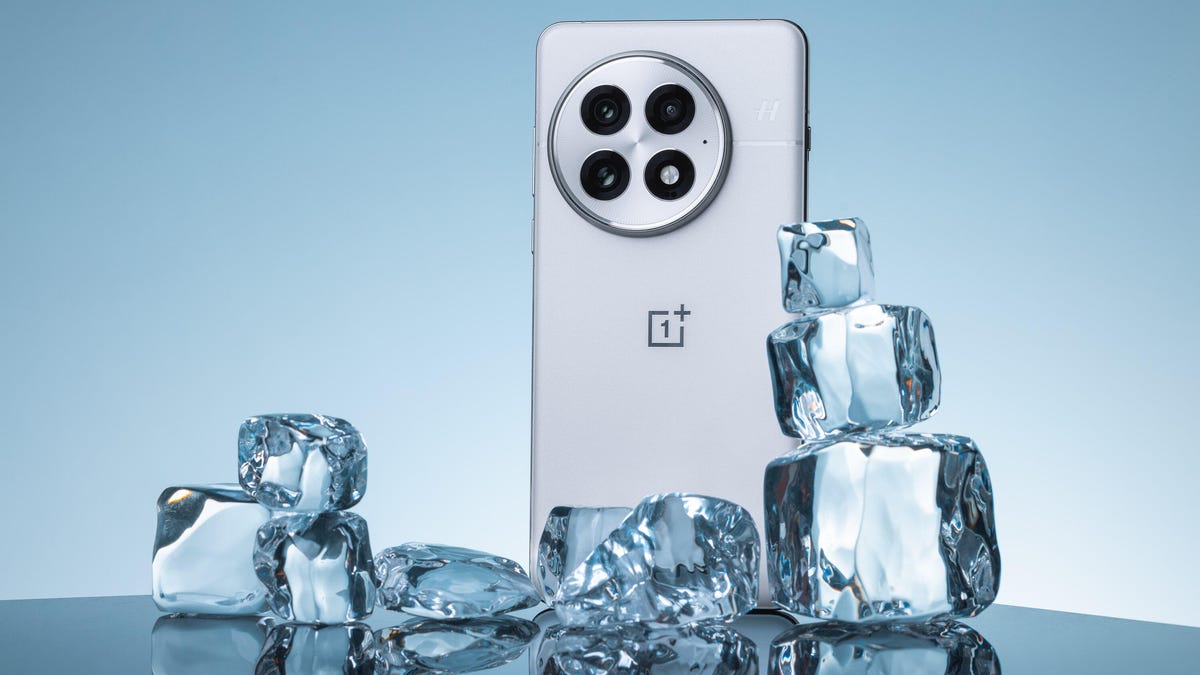Technologies
Your OnePlus 13 Will Get a Dedicated AI ‘Mind Space’ in Update Rolling Out Now
I played with OnePlus’ flagship AI feature. It worked well, and it’s heading to some phones imminently.

It’s a non-negotiable right now that every phone-maker out there must have a plan for integrating AI into its devices. OnePlus is a little late to the party, but it’s arrived nonetheless. Back in May, the company announced plans for bringing its own vision of personalized AI to OnePlus phones, and from this week, it’s rolling out to the OnePlus 13 and 13R.
At a launch event in London earlier this year I not only got to see the first AI features to land on OnePlus phones in action, but also learn about what the company’s future plans are for bringing more complex and sophisticated AI features to its phones down the road.
With all Android phone-makers increasingly making use of best-in-class Qualcomm chips and relying on Google’s Gemini AI, having a strong AI strategy is one way they can set themselves apart from rivals. I was impressed with how far OnePlus seems to be thinking ahead and not rushing into going ham on AI. Its initial AI rollout will likely capture people’s attention, even if its ideas aren’t entirely original.
OnePlus’ statement AI tool is called Plus Mind, which can save, suggest, store and search based on what’s currently on your phone screen, ultimately depositing the details in an app OnePlus is calling «Mind Space.» Plus Mind can be activated at any time, either by a dedicated button (if your phone has one) or by a swipe-up gesture. If it spots details of an event or reservation, it will propose creating a calendar entry.
Mind Space is a place to «organize your fragmented memories,» said Arthur Lam, the company’s director of OxygenOS and AI strategy. This is a hub where all of your most important content will live. AI search will allow you to find what you need without the information overload you may be used to, or it will automatically translate content into another language to make it accessible and searchable.
Plus Mind will debut with the upcoming launch of the OnePlus 13S, a phone designed specifically for the Asian market, which comes with a dedicated AI button (the «Plus Key,» as OnePlus is calling it) on the side of the phone. That means for those of us in the US and Europe, we’ll have to wait a little longer to enjoy OnePlus’ vision for AI ourselves. It will eventually be rolling out to the OnePlus 13 as an over-the-air update later this year, although the company is yet to confirm exactly when.
Plus Mind and Mind Space: My first impressions
On the OnePlus 13, which shipped before the addition of the Plus Key, you instead have to use a three-fingered swipe up from the bottom edge of the screen to activate the AI features. When I tested this in person, it was hit or miss as to whether I could get it to work. There’s definitely a knack to it — you need to start from a couple of centimeters above the lower rim — and there’s a high chance of accidentally displacing what’s on the screen.
It’s clear that OnePlus designed Plus Mind to be used with a dedicated button, and no doubt all future OnePlus phones will feature a Plus Key of their own. It is a shame in retrospect, though, that the key is missing from its most widely available 2025 flagship phone.
After using Plus Mind to save a variety of content, I had mixed opinions on how useful it was. The process of capturing and creating events out of details displayed on screen was seamless, and I found that I was able to use natural language within Mind Space to pull up the details of these events after the fact. But when saving articles I thought were interesting, Mind Space wasn’t able to provide a summary of the entirety of what I’d been reading — only of the specific text that was on screen at the time I activated Plus Mind.
I also struggled to organise the content into collections within Mind Space. This is a manual process, rather than a situation in which the AI takes over to categorize everything you’ve saved. This feels a little like a missed opportunity.
Like other Android phone-makers, OnePlus has the benefit of tapping into the best of Google’s Gemini phone tools, while also choosing what additional features it wants to bring to its phones to make them stand apart from its competitors. That said, its initial foray into AI with Mind Space is bound to draw comparisons to what Nothing is doing with Essential Space — its own dedicated hub for saving content, snippets, links and reminders.
What’s next for OnePlus AI?
Plus Mind and Mind Space are just the first part of OnePlus’ three-stage AI strategy. Next up is integrating a large language model into Plus Mind, allowing your phone to understand your habits to create a «persona» it uses to understand you.
«It will help you understand yourself,» said Lam, and could even help you discover something «surprising» or «enlightening» about yourself.
Stage 3 is when OnePlus plans to go full AI agent, turning into a personal assistant that can know everything about you. But the company’s not quite there just yet. In the meantime it has a few other ideas in the pipeline.
Coming first to India (again, not the EU or the US), are AI VoiceScribe, which will provide you with a quick summary after your call on WhatsApp, Snapchat or Telegram, and AI Call Assistant, which provides you with in-call translation in both text and voice.
On the more playful side, OnePlus is introducing two AI photo tools. The first, AI Best Face 2.0, will allow you to correct the faces of up 20 people in a group photo so that everyone is looking their best (if they have their eyes closed, for example, or what OnePlus describes as a «suboptimal expression»). AI Reframe, meanwhile, will analyze your carelessly shot holiday snaps and suggest creative cropping and framing to make it look like you weren’t three cocktails deep when you shot them.
These photo features will come to OnePlus phones this summer, beginning this week, but for the major OnePlus AI tool rollout, you might have to wait a little longer.
Technologies
If You Were ‘Tricked’ Into an Amazon Prime Subscription, You Should Have Been Paid by Today
Amazon is paying $1.5 billion to people who mistakenly subscribed to Prime, and the first round of payments are due today.

Amazon Prime provides a lot of valuable benefits to its members, but the company’s registration practices for its premium subscription from 2019 to 2025 led to many customers accidentally subscribing to a service they didn’t want.
Amazon is now paying the price for that deception — the US Federal Trade Commission levied a massive $2.5 billion settlement on the company for its subscription tactics.
The majority of the settlement — $1.5 billion — has been earmarked to refund eligible subscribers, with the rest serving as a civil penalty. Amazon is also now legally required to provide a clear, obvious option to decline Prime, making it as easy to leave the service as it is to join.
Amazon isn’t admitting to shady behavior. «Amazon and our executives have always followed the law, and this settlement allows us to move forward and focus on innovating for customers,» Mark Blafkin, Amazon senior manager, said in a statement. «We work incredibly hard to make it clear and simple for customers to both sign up or cancel their Prime membership, and to offer substantial value for our many millions of loyal Prime members around the world.»
The online retail giant started sending out payments to eligible people in November and was supposed to conclude its initial automatic payments today, Dec. 24. Read on to learn more about Amazon’s settlement and what to do if you think you’re eligible for compensation but didn’t receive a payment.
Why did the FTC fine Amazon?
The FTC filed suit against Amazon, accusing the company of using «dark patterns» to nudge people into Prime subscriptions and then making it too hard to cancel. The FTC maintained Amazon was in violation of Section 5 of the FTC Act and the Restore Online Shoppers’ Confidence Act.
«Specifically, Amazon used manipulative, coercive or deceptive user-interface designs known as ‘dark patterns’ to trick consumers into enrolling in automatically renewing Prime subscriptions,» the FTC complaint stated.
Who’s eligible for Amazon’s payout?
Amazon’s legal settlement is limited to customers who enrolled in Amazon Prime between June 23, 2019, and June 23, 2025. It’s also restricted to customers who subscribed to Prime using a «challenged enrollment flow» or who enrolled in Prime through any method but were unsuccessful in canceling their memberships.
The FTC called out specific enrollment pages, including Prime Video enrollment, the Universal Prime Decision page, the Shipping Option Select page and the Single Page Checkout. To qualify for a payout, claimants must also not have used more than 10 Amazon Prime benefits in any 12-month period.
Customers who signed up via those challenged processes and did not use more than three Prime benefits within one year will be paid automatically by Amazon within 90 days. Other eligible Amazon customers will need to file a claim, and Amazon is required to send notices to those people within 30 days of making its automatic payments.
If you are eligible for the automatic payment, you should have received an email from Amazon by today explaining how to claim the money. You can be paid via PayPal or Venmo. If you prefer a paper check, don’t accept the digital payment. The FTC says Amazon will mail you a check that you must cash within 60 days.
How big will the Amazon payments be?
Payouts to eligible Amazon claimants will be limited to a maximum of $51. That amount could be reduced depending on the number of Amazon Prime benefits you used while subscribed to the service. Those benefits include free two-day shipping, watching shows or movies on Prime Video or Whole Foods grocery discounts.
Customers who qualify for the payments should have received them from Nov. 12 to Dec. 24, 2025.If you are eligible for compensation from Amazon but didn’t receive a payout, you’ll need to file a claim after Amazon starts the claim process. The FTC says it will update its Amazon settlement site once that process has begun.
Customers who did not use a challenged sign-up process but instead were unable to cancel their Prime memberships will also need to file claims for payment.
Technologies
Today’s NYT Connections: Sports Edition Hints and Answers for Dec. 25, #458
Here are hints and the answers for the NYT Connections: Sports Edition puzzle for Dec. 25, No. 458.

Looking for the most recent regular Connections answers? Click here for today’s Connections hints, as well as our daily answers and hints for The New York Times Mini Crossword, Wordle and Strands puzzles.
Today’s Connections: Sports Edition has a real mix of categories, including one that’s all about a certain famous athlete. If you’re struggling with today’s puzzle but still want to solve it, read on for hints and the answers.
Connections: Sports Edition is published by The Athletic, the subscription-based sports journalism site owned by The Times. It doesn’t appear in the NYT Games app, but it does in The Athletic’s app. Or you can play it for free online.
Read more: NYT Connections: Sports Edition Puzzle Comes Out of Beta
Hints for today’s Connections: Sports Edition groups
Here are four hints for the groupings in today’s Connections: Sports Edition puzzle, ranked from the easiest yellow group to the tough (and sometimes bizarre) purple group.
Yellow group hint: Swing away!
Green group hint: What’s that on your bat?
Blue group hint: Catch the football.
Purple group hint: Lake Placid or Lillehammer.
Answers for today’s Connections: Sports Edition groups
Yellow group: Baseball bat materials.
Green group: Associated with George Brett.
Blue group: NFL rookie WRs.
Purple group: Olympic ____.
Read more: Wordle Cheat Sheet: Here Are the Most Popular Letters Used in English Words
What are today’s Connections: Sports Edition answers?
The yellow words in today’s Connections
The theme is baseball bat materials. The four answers are aluminum, ash, birch and maple.
The green words in today’s Connections
The theme is associated with George Brett. The four answers are 5, pine tar, Royals and third base.
The blue words in today’s Connections
The theme is NFL rookie WRs. The four answers are Burden, Egbuka, Golden and McMillan.
The purple words in today’s Connections
The theme is Olympic ____. The four answers are Games, rings, torch and village.
Don’t miss any of our unbiased tech content and lab-based reviews. Add CNET as a preferred Google source.
Technologies
Christmas Eve Gaming Crushed as Steam Goes Offline
Services related to the popular game hub seem to slowly be returning as of Wednesday afternoon.

Your Christmas Eve gaming session might not go as planned. Online gaming hub Steam went down on Wednesday. As of about 1:30 pm PT, the Steam store page was once again accessible, so services seemed to be coming back online.
The Steam outage appeared to begin mid-afternoon ET, according to Downdetector, which monitors site outages. (Disclosure: Downdetector is owned by the same parent company as CNET, Ziff Davis.)
A representative for Steam did not immediately respond to a request for comment.
As of Wednesday noon PT, Steam’s official X and Bluesky accounts hadn’t posted anything about the outage.
Gamers certainly noticed. «Steam down, Steam down!!!» wrote one Bluesky user.
Others commented on the bad timing just as gamers were enjoying time off or receiving gaming gifts. «‘You got a gift on Steam!’ oh cool ‘Steam is down’ oh cool,» wrote another Bluesky user.
-

 Technologies3 года ago
Technologies3 года agoTech Companies Need to Be Held Accountable for Security, Experts Say
-

 Technologies3 года ago
Technologies3 года agoBest Handheld Game Console in 2023
-

 Technologies3 года ago
Technologies3 года agoTighten Up Your VR Game With the Best Head Straps for Quest 2
-

 Technologies4 года ago
Technologies4 года agoBlack Friday 2021: The best deals on TVs, headphones, kitchenware, and more
-

 Technologies4 года ago
Technologies4 года agoVerum, Wickr and Threema: next generation secured messengers
-

 Technologies4 года ago
Technologies4 года agoGoogle to require vaccinations as Silicon Valley rethinks return-to-office policies
-

 Technologies4 года ago
Technologies4 года agoOlivia Harlan Dekker for Verum Messenger
-

 Technologies4 года ago
Technologies4 года agoiPhone 13 event: How to watch Apple’s big announcement tomorrow
